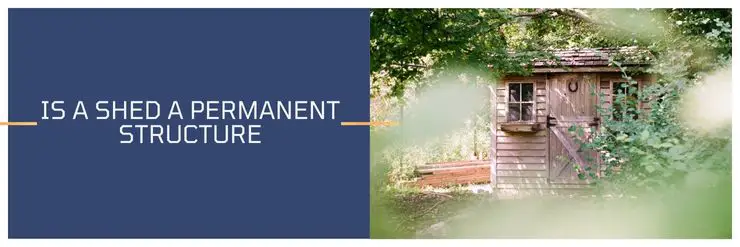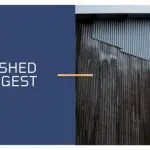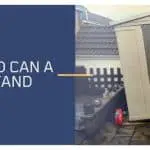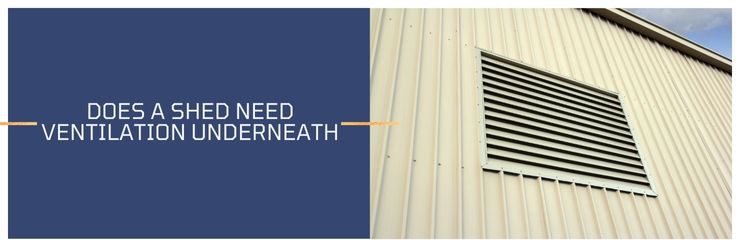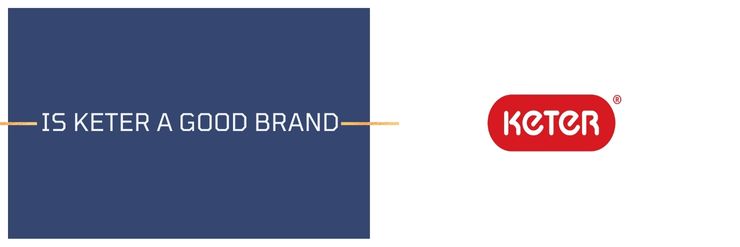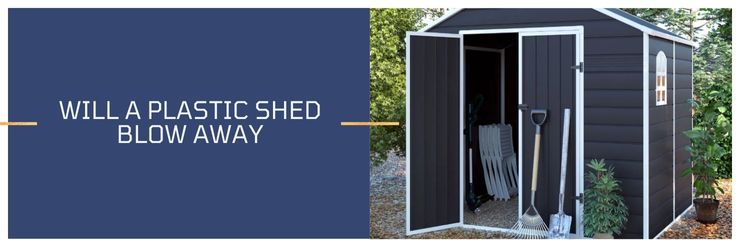When it comes to sheds, there seems to be some confusion about whether they are considered permanent or not.
Years ago, when I was considering having a shed installed in my backyard, this was something that I wondered about too. Is a shed a permanent structure?
In order to consider a permanent structure, sheds must be built on a permanent foundation. This means that they cannot be moved without some serious dismantling.
Before you install a shed, it is important to understand the definition of both terms.
So, what exactly is the difference between a permanent structure and a temporary one? Let’s take a look.
Is a Shed a Permanent Structure
A shed is typically a temporary or movable structure that is used for storage, workshop space, or as an occasional shelter from the elements.
They are often found in gardens and backyards. Some sheds are even designed to be used as guest houses or home offices.

Permanent structures are typically much larger and are not designed to be moved. They are built on a foundation that is meant to be permanent, such as a concrete slab or footing.
These types of structures include houses, office buildings, and storage units. They also tend to be larger, and they often have utility hookups (for water, electricity, etc.)
If you plan on leaving your shed in one spot for a prolonged period of time, it is likely that it will be considered a permanent structure.
If shed a permanent structure, then you will need to get approval from your local zoning board or building department before you can proceed with construction.
This is because these types of buildings are subject to different building codes and regulations than temporary structures.
What Makes a Shed a Permanent Structure
There are certain characteristics that make a shed a permanent structure. These include having a foundation, being attached to the property, and being built to code. The shed also may stay in one spot for an extended period of time.
A foundation is one of the key components that make a shed a permanent structure. This is because a foundation makes the shed immovable.
Without a foundation, the shed could easily be blown away or toppled over. A foundation also keeps the shed level and steady.
Being attached to the property means that the shed is securely fastened to the ground or another structure on the property. This can be done with anchor bolts, concrete footings, or straps.
Building the shed to code means that it meets all the necessary requirements for a permanent structure.
This includes having a strong roof, proper shed ventilation, and is made of weather-resistant materials.
It is important to keep in mind that the definition of a permanent structure can vary from place to place.
Ultimately, it is up to your local building code enforcement office to decide whether or not your shed qualifies as a permanent structure.
Permanent Structure vs Temporary Structure: Which Better Suits Your Needs
You may be wondering which type of shed is better. The answer to this question depends on several factors:
Cost
The cost of a permanent shed is typically higher than the cost of a temporary shed. This is because permanent sheds are made of higher-quality materials and require more labor to construct.
However, permanent sheds also have the advantage of being able to be used for a longer period of time.
Ease of Construction
Permanent sheds can be more difficult to construct than temporary sheds. This is because they require more precise measurements and more attention to detail.
However, once a permanent shed is constructed, it will likely last for many years with minimal maintenance.
Size and shape
Permanent sheds are typically larger and have a more custom look than temporary sheds. This is because they are built to specific specifications.
However, this also means that permanent sheds may not be able to be moved or reconfigured as easily as temporary sheds.
Use
Permanent sheds are typically used for storage or as workshops. They can also be used as guest houses or home offices.
Temporary sheds, on the other hand, are often used for seasonal storage or as a temporary workspace. This is because they are not built to withstand heavy use or harsh weather conditions.
Location
Permanent sheds are usually placed in a fixed location on your property. This is because they required a level and sturdy foundation in order to be built.
Temporary structures can be placed on any level surface and do not require a foundation. This makes them ideal for use in areas where permafrost or shifting soil would make constructing a permanent shed difficult or impossible.
Weather Conditions
Ultimately, materials and construction will dictate how well a shed holds up in different weather conditions.
However, in general, permanent sheds are better equipped to withstand extreme weather conditions than temporary sheds.
If you live in an area with harsh winters, for example, a permanent shed is more likely to keep your belongings safe and dry than a temporary shed.
Permits and Zoning
Permanent sheds usually require a permit from your local municipality. This is because they are considered to be a permanent structure on your property.
Temporary structures generally do not require a permit. However, it is always best to check with your local municipality to see if there are any zoning regulations that would apply to your shed.
Maintenance
Any sheds will require some maintenance over time. This could include painting, repairing the roof, or replacing damaged parts.
However, this is typically less work than what would be required for a temporary shed. Permanent sheds are also less likely to be blown away or toppled over in strong winds.
Resale Value
Permanent sheds usually add more value to your property than temporary sheds. This is because they are considered to be a permanent improvement to your home.
Aesthetics
Permanent sheds can be designed to match the style of your home. They can also be customized with features such as windows, doors, and porches.
Temporary structures are often more utilitarian in design and may not always complement the look of your home.
Conclusion
Is a shed a permanent structure? It all depends on the circumstances. If you want to keep your shed in one or the same place for a long time, it is likely that it will be considered a permanent structure.
However, if you plan on moving your shed around frequently or using it for a temporary storage solution, it is less likely to be considered a permanent structure.
Ultimately, the decision of whether or not a shed is considered a permanent structure is up to the interpretation of the law.
Be sure to check with your local building department to find out what their specific requirements are.

